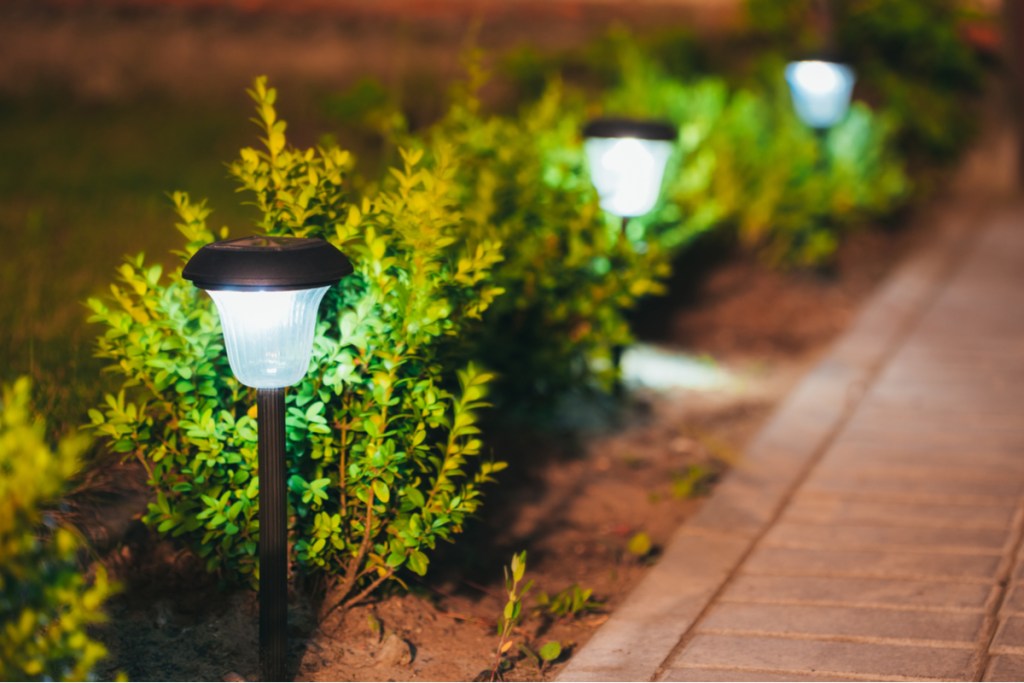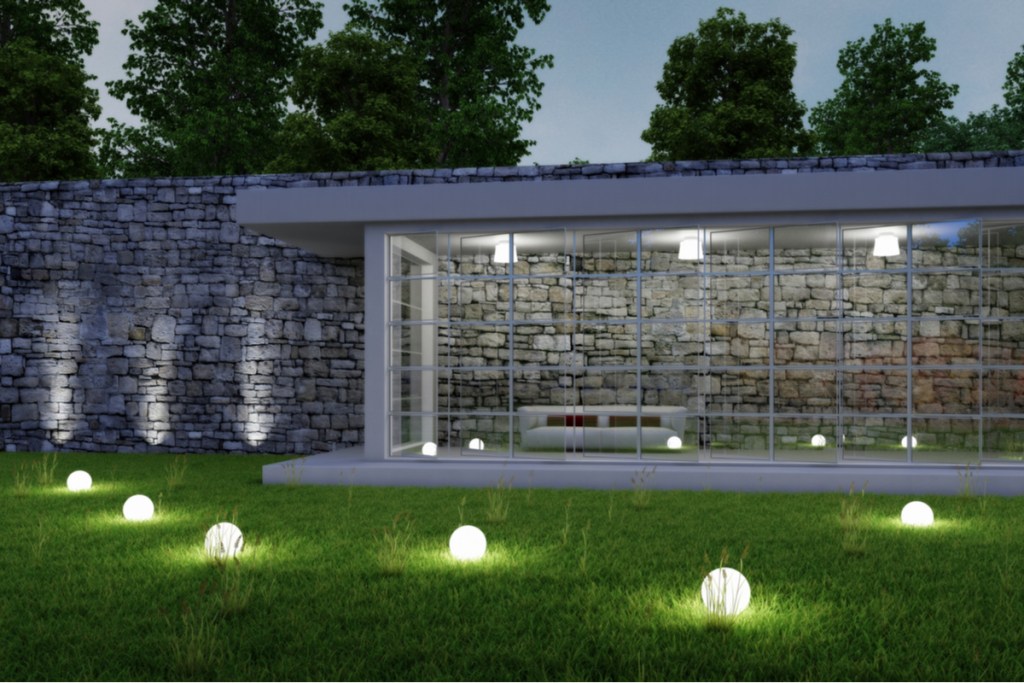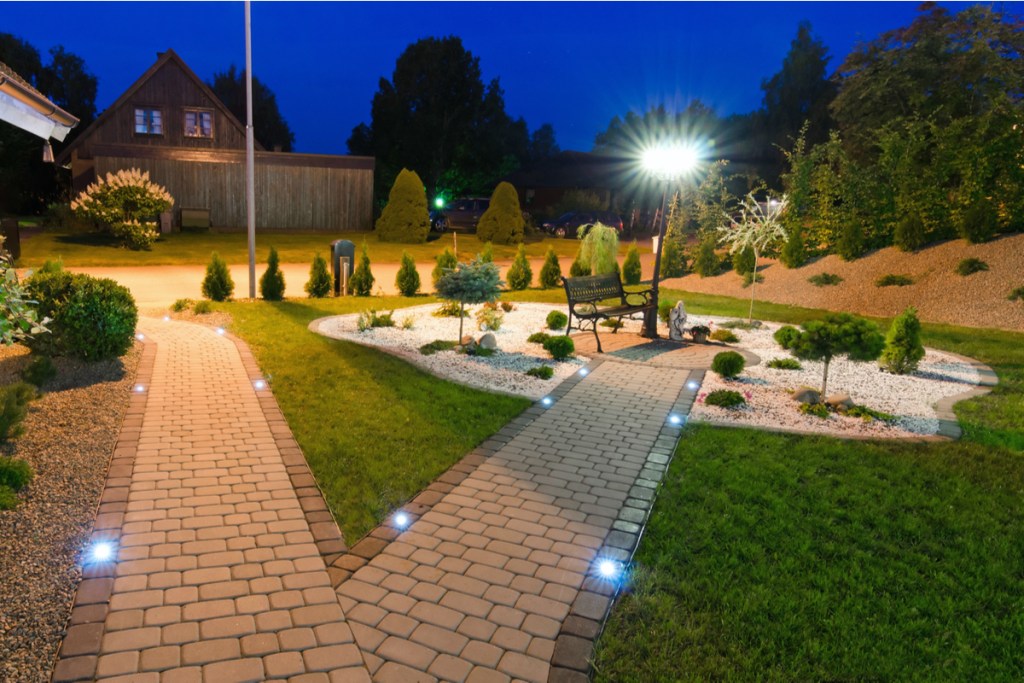If you’re looking for a great way to light up your yard or garden, you might be thinking of investing in some solar lighting. Solar lighting, as the name suggests, uses the power of the sun (solar energy) to power lights. Solar lighting isn’t great for every situation, but for outdoor spaces it works like a charm. Since it uses solar power, solar lighting is also an easy, eco-friendly alternative to electric lights. Here are our seven favorite tips to help you get started with solar lights.
Set a budget
Solar lights come in many different sizes, shapes, and prices. Before you decide how many lights you want, what you want them to look like, or even where you’re going to put them, you should decide how much you want to spend. This will help lay the foundation for every other part of your design. There’s nothing worse than meticulously planning outdoor lighting, then realizing that the plan would cost too much and having to scrap it. If you start with your budget, and keep it in mind throughout the planning process, everything will go much smoother.

Choose locations before getting the lights
Choosing your locations first may seem like an obvious tip, but it’s still extremely important. It lets you see exactly how large of an area you need lit, which helps you estimate how many lights will be necessary. Choosing your locations also helps when deciding what type of lights to get. There are small pathway lights, wall-mounted flood lights, and even lights disguised to look like rocks or stepping stones, all of which are suited for different types of outdoor areas.
Consider how many lights you want, and how many you need
When designing a space, it’s easy to get swept up in the process and bite off more than you can chew. When talking about how many lights to get, plan for your ideal number of lights, but take note of what the bare minimum would be, as well. That way, even if the rest of your plan falls through or is delayed, you’ll already know how many lights you absolutely need to get to adequately and safely light the area.

Experiment with different shapes and sizes of lights
Solar lighting design is, after all, a type of design. It’s in the name! Different sizes and shapes of lights can create different atmospheres and aesthetics for your outdoor space. Smaller lights can be used to create an intimate feel, while larger lights can feel like a spotlight. You can use shapes to your advantage, too. Take a look at the area you’re lighting, and what shapes are present there. Repeating these shapes in your lighting choices can really tie an area together.
Don’t be afraid to mix and match
Having a matching set can be nice sometimes, but a little bit of intentional dissonance can make you stand out from the crowd. If you’re designing lighting for a seating area, why not have a centerpiece light that’s a bit different? If you’re lighting a walkway, you could use matching lights for the middle and a different set for the ends. Going into the design process planning to mix and match also helps you adapt if there’s an unexpected issue with your plan later down the road, since you’d already be in an adaptable mindset.

Take your time
Remember, there’s no rush to complete your design. You can get lights in small bursts and update your design over time. If you have an urgent deadline (say, friends are coming over and you need your outdoor sitting area lit by then), keep tip number three in mind and get the essential lights first. Putting your design together bit by bit is also easier on your budget, and it gives you plenty of opportunities to adjust your design.
Remember to be flexible with your plans
Okay, we may have mentioned this already. Being flexible doesn’t just help when your plan runs into trouble, though! It also opens you up to new, potentially better, options. When you go to get your lights, whether you’re going to a physical store or shopping online, you might come across new lights that weren’t previously available. Of course, it doesn’t pay to be indecisive, but that doesn’t mean you shouldn’t consider and carefully weigh all your options before making your final decision.
With these seven tips in your tool belt, you’ll be designing the perfect solar lighting display in no time. Whether you’re looking for something simple and straightforward or planning an intricate masterpiece, you know everything you need to plan your lights. Plus, since they’re solar powered, you can rest assured knowing that your lights are as green as possible.
Editors' Recommendations
- 6 fantastic backyard design apps to help you craft your own personal oasis
- Do grow lights work? How to make sure you’re not wasting your money
- Small greenhouse tips: 5 ways to make the most of limited space
- 3 of the best solar garden lights for a bright and eco-friendly yard
- 5 outdoor lighting tips we learned from experience so you didn’t have to




